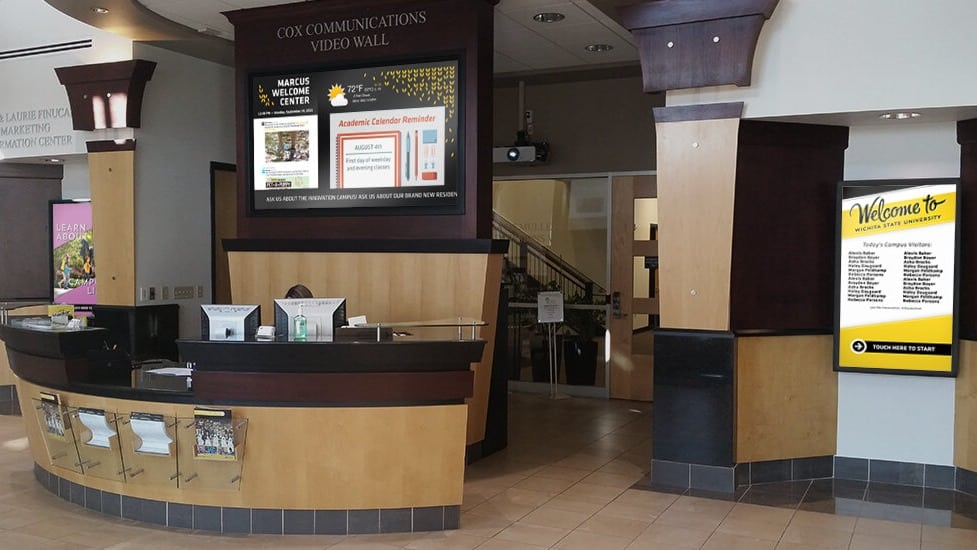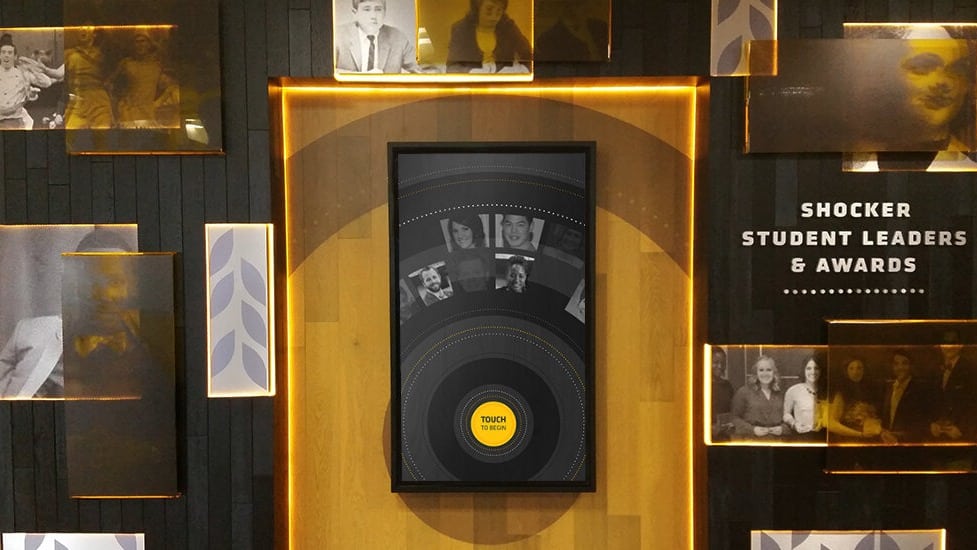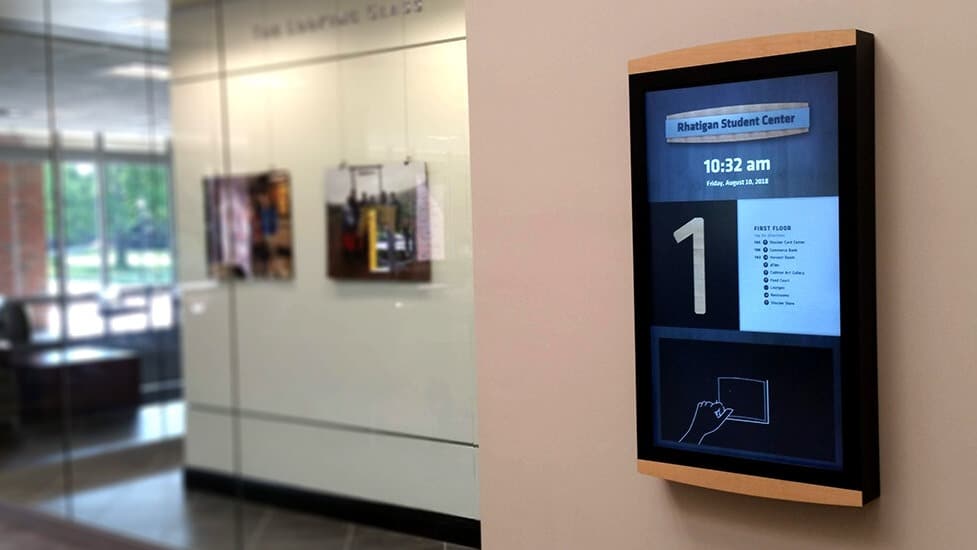Wichita State University Modernizes the Campus
Wichita State University Modernizes the Campus

This 15-year project continues to expand, helping departments organize, modernize, educate and promote their accomplishments.
Project summary
Project summary
Wichita State University is a case-in-point for trying new things. Since 2007 when they deployed a campuswide emergency alert system, the campus has continually asked the question, “What more can we do with our digital signage?”


At a Glance
At a Glance
Campus-wide and student-run global messaging system
Home-grown digital signage services department
Interactive displays
Live data integration
196,875 hours saved by employees

Goal & Challenge
Goal: To create a campus-wide communications system and modernize the campus experience.
For WSU, the goal of its digital signage platform has always been a moving target. Digital signage was initially rolled out in 2007, after the wake of the Virginia Tech incident with the goal of helping the University coordinate and communicate in the event of a campus emergency. In 2014, the target accelerated dramatically during the Rhatigan Student Center renovation project. Rhatigan wanted digital signage to help modernize the Student Center. That is when the Department formulated a more ambitious plan to streamline the student and visitor experience, a goal which has been reciprocated by many buildings and departments since then.
Challenge: Ramp up global digital signage from “crawl” to “walk,” and develop the expertise and process to deploy additional “run” custom signage projects on a case-by-case basis, including interactive features.
To allow for the gradual digital transformation of the campus, WSU needed a foundational solution that could integrate with Rave Alert. Content changes were to be made by non-developers, such as students, faculty, and staff-members. They needed a customizable, no-code interface that would trigger process events, and uphold workgroup priveleges. It just needed to work.
The renovation of the Rhatigan Student Center amped up these challenges into a more ambitious, user-centric strategy. With over 50 meeting rooms shared across students, faculty, and campus visitors, Rhatigan needed an interactive wayfinding solution that would allow visitors to input their destination and receive precise visual instructions to chart the right path.

Flexible Content Creation and Scheduling
12 interactive touchscreens to help Rhatigan Student Center visitors with wayfinding, as well as additional use-cases, paid for by departments and buildings.
Using Scala Content Manager and Designer in combination with HTML widgets and open-source resources, the Department of Video Services successfully deployed 12 touchscreens across the student center. The solution integrates with the event management system, so room bookings are clearly displayed in real-time. This allows visitors to use the name of a meeting or event in order to receive the right directions to their event, rather than being forced to find the appropriate room number.

Scala Content Manager and Designer Power WSU Digital Signage
The wayfinding solution at the Student Center continues to give campus visitors a modern introduction to the campus. Rhatigan has been heavily used for over seven years since the renovation. Visitors use the interactive touchscreens without problem or need to ask staff for directions.
In a conservative estimate of the time saved by digital signage, we presumed one question would require 1 minute to answer, and an average of 10 questions asked per event. Given these assumptions, Rhatigan staff has saved approximately 196,875 hours over the last seven years and counting. More than this, however, the success of the solution has inspired departments and buildings to fund their own digital signage installations, leading to a gradual digital transformation of the entire campus experience.

About Wichita State University
Wichita State University serves as the Kansas urbanbased research university, enrolling more than 16,000 students from every state in the U.S. and more than 100 countries. Wichita State and WSU Tech are recognized for being student centered and innovation driven. Located in the largest city in the state with one of the highest concentrations in the United States of jobs involving science, technology, engineering and math (STEM), Wichita State University provides uniquely distinctive and innovative pathways of applied learning, applied research and career opportunities for all of our students.

